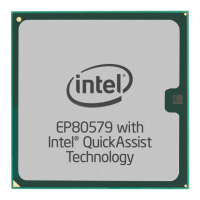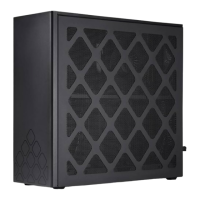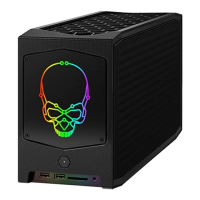Introduction
R
Intel
®
E7500/E7505 Chipset MCH Thermal Design Guide 7
1 Introduction
As the complexity of computer systems increase, so do the power dissipation requirements. Care
must be taken to ensure that the additional power is properly dissipated. Typical methods to
improve heat dissipation include selective use of ducting, and/or passive heatsinks.
The goals of this document are:
• To specify the operating limits of the Intel
®
E7500/E7505 chipset MCH components.
• To describe a reference thermal solution that meets the thermal specifications of the
Intel
®
E7500/E7505 chipset MCH components.
Properly designed solutions provide adequate cooling to maintain the E7500/E7505 chipset MCH
die temperatures at or below thermal specifications. This is accomplished by providing a low
local-ambient temperature, ensuring adequate local airflow, and minimizing the die to local-
ambient thermal resistance. By maintaining the E7500/E7505 chipset MCH die temperature at or
below the specified limits, a system designer can ensure the proper functionality, performance, and
reliability of the chipset. Operation outside the functional limits can degrade system performance
and may cause permanent changes in the operating characteristics of the component.
The simplest and most cost effective method is to improve the inherent system cooling
characteristics through careful design and placement of fans, vents, and ducts. When additional
cooling is required, component thermal solutions may be implemented in conjunction with system
thermal solutions. The size of the fan or heatsink can be varied to balance size and space
constraints with acoustic noise.
This document addresses thermal design and specifications for the E7500/E7505 chipset MCH
components only. For thermal design information on other chipset components, refer to the
respective component datasheet. For the P64H2, refer to the Intel
®
PCI-64 Hub 2 (P64H2)
Thermal Design Guidelines. For the ICH3-S, refer to the Intel
®
82801CA I/O Controller Hub 3
(ICH3-S) Datasheet. For the ICH4, refer to the Intel
®
82801DB I/O Controller Hub 4 (ICH4)
Datasheet.
Note: Unless otherwise specified, the term “MCH” refers to both the E7500 chipset MCH and E7505
chipset MCH.

